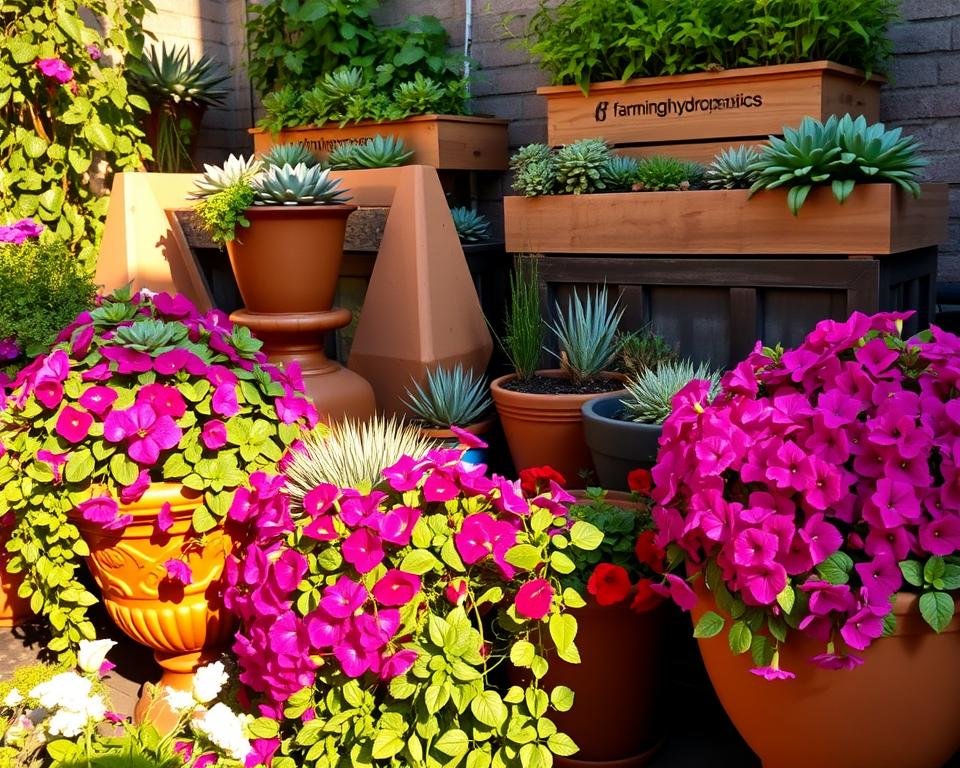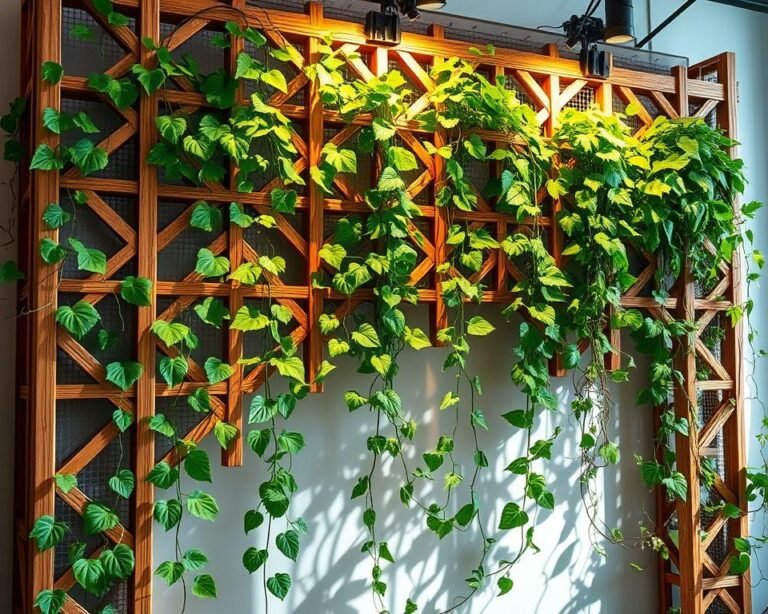Container Flower Gardens: Vibrant Blooms in Limited Space
I grew up in a tiny apartment and discovered the joy of creating container flower gardens. Transforming my small balcony into a colorful oasis showed me that even the smallest spaces can overflow with life and beauty.
Container flower gardens are more than just a gardening trend—they’re a smart solution for city living. They bring vibrant blooms and greenery to patios, balconies, and even tiny corners that might otherwise feel dull.
Imagine turning a small patio or urban balcony into a lush retreat. With the right mix of plants and containers, you can design mini landscapes full of color and charm. Hardy flowers like ‘Little Blanche’ periwinkles are perfect for beginners, offering beauty with minimal effort.
Container flower gardens are perfect for anyone who loves plants and creativity. No matter the size of your space, you can craft a stunning, personalized display of nature right at your doorstep.
Key Takeaways
- Container gardening transforms limited spaces into vibrant green areas
- Drought-tolerant plants provide low-maintenance beauty
- Small spaces can host diverse, colorful plant collections
- Versatile containers allow for flexible garden design
- Urban gardeners can create personalized botanical retreats
Essential Elements of Container Gardening
Urban gardening has changed how we grow plants in small spaces. Container gardening lets us make lively green spots in tight areas. It’s great for apartments, balconies, and small outdoor spots.
To grow successful potted plants, focus on three main things: picking the right container, preparing the soil, and placing them well. Let’s dive into the key points for creating beautiful containers.
Choosing the Right Container Size and Material
When picking containers, keep these tips in mind:
- Choose containers that fit your space and plant needs
- Make sure plants are about 1/3 taller than the container
- Big plants need bigger containers for their roots
Understanding Soil Requirements and Drainage
Good soil is key for a healthy container garden. A good mix usually has:
- 50% standard potting soil
- 50% organic matter
- Perlite for better drainage
“The right soil mix can turn an ordinary container into a thriving garden.”
Location and Sunlight Considerations
Where you place your containers matters a lot. Strategic positioning can make a big difference. Think about these things:
- Check how much sunlight your spot gets
- Pick plants that like your light
- Rotate containers for even growth
Knowing these key points will help you make stunning, healthy container gardens. They can brighten up even the smallest areas.
Container Flower Gardens: Design Principles and Plant Selection
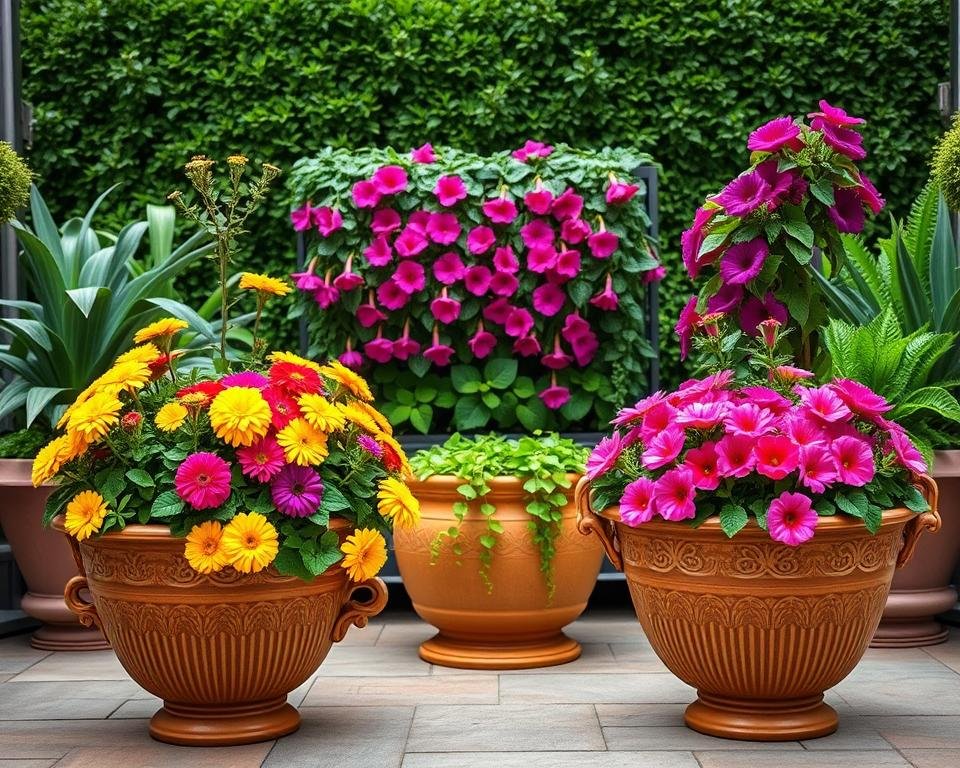
Creating stunning flower arrangements in miniature gardens needs a smart plan. The secret to beautiful container gardens is knowing the basic design rules. These rules turn simple plants into stunning displays.
Experts suggest using the “thriller, filler, spiller” design. This approach makes your container gardens interesting and balanced:
- Thriller: A tall, eye-catching plant that grabs attention
- Filler: Plants of medium height that add color and volume
- Spiller: Plants that spill over the container’s edges
Choosing the right plants is more than just picking pretty ones. Think about the container’s size and what each plant needs:
| Container Size | Plant Capacity |
|---|---|
| 10″ to 12″ pot | 3-4 plants |
| 14″ to 16″ pot | 5-7 plants |
| 16″ to 20″ pot | 6-9 plants |
When designing your container garden, focus on color and plant matching. Pick plants that need similar light and water. Dark greens and purples can make shady spots pop, while light containers brighten dark areas.
Pro tip: Choose two to three larger plants for a more dynamic design rather than crowding the container with many small plants.
Small Space Solutions for Maximum Impact
Turning small outdoor areas into green spaces needs creativity and planning. Vertical gardens, patio gardening, and balcony gardens are great for making the most of every inch. With smart ideas, even tiny spots can become lush, green havens.
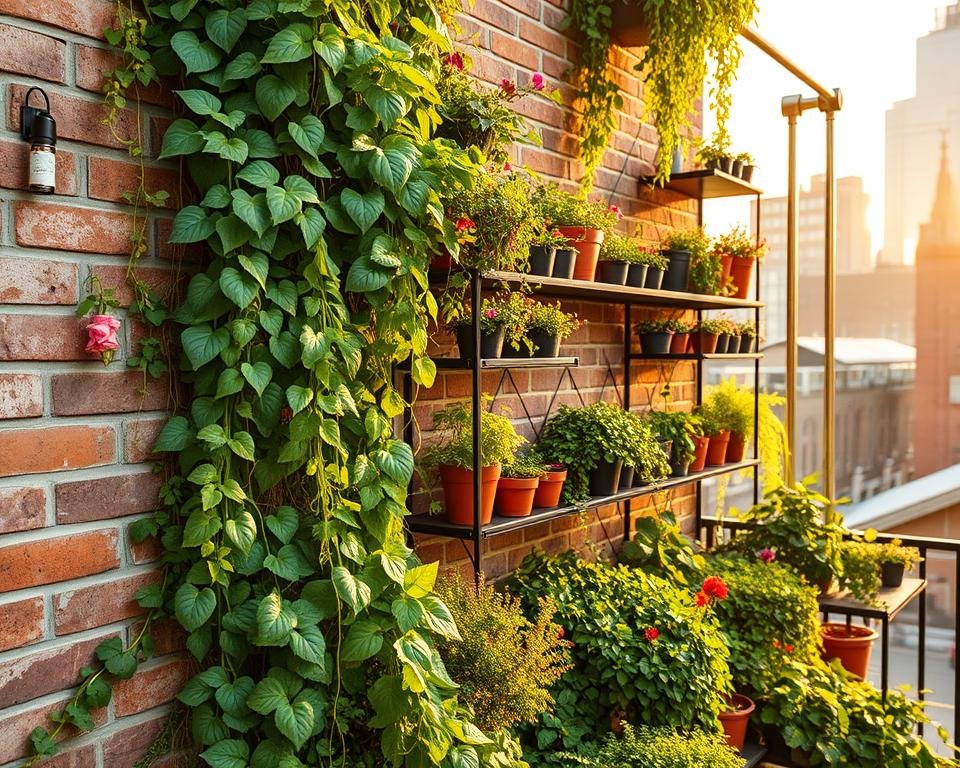
Vertical Gardening Techniques
Vertical gardening is a big help for small spaces. It lets you grow more by using the wall’s height. Here are some tips:
- Install wall-mounted planters for living walls
- Use trellises for climbing plants like morning glories
- Implement hanging baskets to save ground space
Multi-level Display Methods
To add depth to small gardens, arrange plants thoughtfully. Tiered container shelving can boost sunlight by 20%. This helps plants grow well in tight spots.
| Display Method | Space Efficiency | Benefits |
|---|---|---|
| Hanging Planters | 30% ground space saved | Versatile positioning |
| Wheeled Containers | 90% improved mobility | Flexible sunlight access |
| Stacked Planters | 50% vertical space utilization | Multiple plant layers |
Space-saving Container Arrangements
Make the most of your balcony or patio with smart container placement. Upcycling containers can cut gardening costs by 60%. It also offers creative ways to grow plants.
- Group containers closely for a mini-garden effect
- Use compact herb gardens to save space
- Implement companion planting for enhanced growth
Pro tip: A successful container garden can be achieved with as few as four carefully selected plants.
Maintaining Vibrant Container Gardens
Keeping your container flowers alive needs regular care. These plants need more water than garden beds, sometimes needing water every day in hot weather.
For your container flowers to thrive, follow these steps:
- Water management is critical for container blooms
- Proper fertilization supports robust plant growth
- Regular pruning encourages continuous flowering
- Pest prevention protects plant health
Watering is key to keeping your flowers healthy. Check the soil by touching the top inch. If it’s dry, it’s time to water. Drip irrigation systems or self-watering containers keep the soil moist without too much water.
Fertilizing is also vital. Use a water-soluble fertilizer, but only at half the strength. This gives your plants the nutrients they need without harming their roots.
Pruning and deadheading help your flowers bloom more. Cut off dead flowers from plants like geraniums and dahlias. This encourages new growth. A simple pinch can make annuals bushier and more flowerful.
- Pinch plants like impatiens twice during growing season
- Remove dead flowers immediately
- Use clean, sharp pruning tools
Keep your flowers safe from harsh weather. In cold areas, use plastic pots to keep moisture in. Mulching with materials like sphagnum moss helps prevent soil compaction and protects roots.
Creative Container Ideas and Combinations
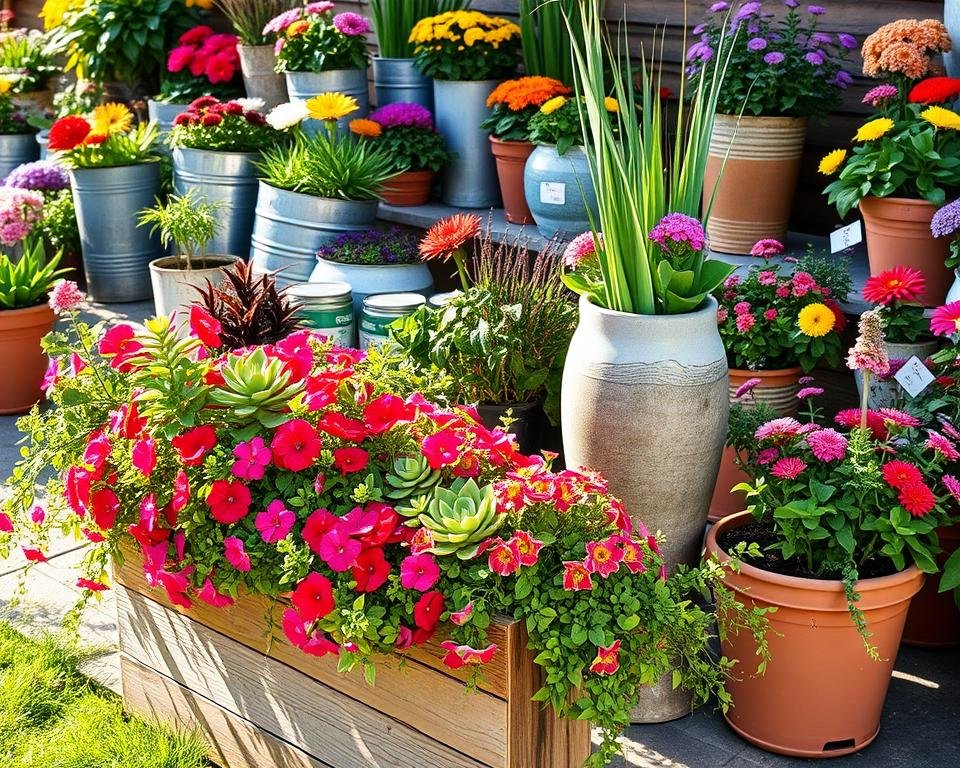
Make your outdoor areas pop with new container flower ideas. Container gardening lets you decorate small spaces with big impact. It’s all about creativity and flexibility.
Seasonal Color Combinations
Build a garden that changes with the seasons. Here are some tips for each time of year:
- Spring: Mix violas with pansies for a splash of color
- Summer: Try Calliope-series geraniums and lantanas for hot weather
- Fall: Snapdragons and dianthus keep things interesting
- Winter: Go for plants like dwarf arborvitae that can handle cold
Theme-based Container Gardens
Make your containers tell a story with themed gardens:
- Tropical: Add majesty palms and bright flowers
- Cottage: Choose soft, romantic blooms
- Modern: Opt for simple, structured plants
Mixed Flower and Foliage Arrangements
Learn to mix flowers and leaves with the “spiller, thriller, filler” method. Use old items like milk cans or dough bowls for a unique look. This adds charm to your garden.
Pro tip: Place containers close together for a mini-garden look.
Try new planters and mixes to turn your yard into a masterpiece.
Overcoming Common Container Gardening Challenges
Urban gardening and small space gardening face unique hurdles. These challenges can test even the most seasoned gardeners. Knowing these obstacles is crucial for a thriving container garden. It turns your small space into a lush oasis.
Managing moisture is vital in container gardening. Soil in containers dries out 2-3 times faster than ground soil. This means you need to check it often. Use a finger to dig about an inch deep to see if it’s time to water. Container gardening techniques help keep the soil just right.
- Use mulch to reduce moisture loss by up to 30%
- Choose containers with drainage holes to avoid root rot
- Opt for high-quality potting mixes that hold moisture
Nutrient loss is another big challenge. Containers can lose up to 50% of nutrients through drainage. Regular fertilization is key. Organic soil amendments can boost plant health and increase yields by 30%.
| Challenge | Solution |
|---|---|
| Quick Soil Drying | Mulching, frequent monitoring |
| Nutrient Loss | Regular fertilization, quality soil mix |
| Limited Space | Vertical gardening, strategic container placement |
Pro tip: For successful small space gardening, pick your containers carefully. A 5-gallon pot is ideal for most herbs. It gives roots room to grow and prevents overcrowding.
Creative gardening isn’t about space—it’s about imagination and smart solutions.
Conclusion
Starting your container flower garden opens up a world of creativity. Even the smallest outdoor spaces can be transformed. Vibrant blooms can turn balconies, patios, and tiny backyards into beautiful gardens.
Container gardens are versatile and easy to start. They’re perfect for both experienced gardeners and beginners. These small gardens help you connect with nature, reduce stress, and create stunning views.
Each container is a chance to show off your creativity. Try different flower mixes, vertical gardening, and new ideas. Your garden can become a source of pride and relaxation.
Creating your container garden is a journey worth taking. Your small space has great potential. Start with one flower and one container at a time.

